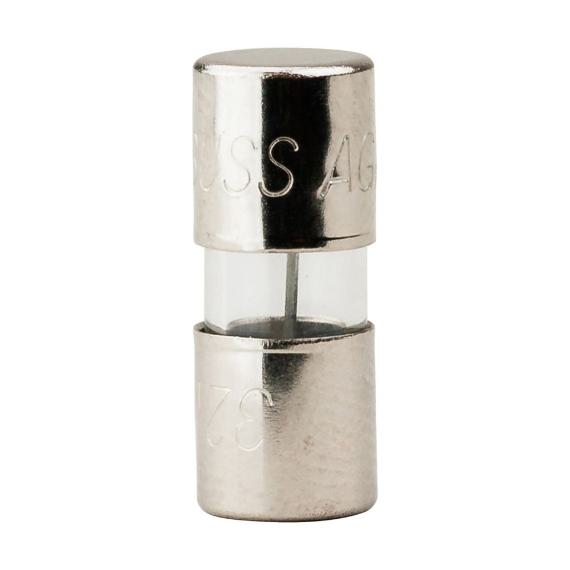Bussmann AGA-10 automotive fuse AGA-10 protects electrical circuits from overcurrent situations. It has a rated current of 10 amperes and is ideal for protecting lighting circuits, power windows, air conditioning systems, dashboard electronics and other electrical components in automobiles.
Working Mechanism:
- Under normal operating conditions, the electrical current flows through the circuit where the fuse is installed.
- The AGA-10 fuse is placed in series with the circuit components.
- If the current flowing through the circuit exceeds the rated value of 10A, an overcurrent situation occurs.
- Inside Bussmann AGA-10 fuse, there's a small wire that has a low melting point.
- When the overcurrent condition occurs, the current passing through this wire causes it to heat up rapidly.
- As the current-induced heat increases, the wire reaches its melting point.
- Once the wire melts, it creates an open gap in the circuit. This gap effectively breaks the flow of electrical current.
Frequently Asked Questions:
Q. How do I identify a blown fuse?
A. A blown fuse can often be identified by a visible break in the metal wire inside the fuse.
Q. What is the difference between blade-type and glass tube fuses?
A. Blade-type fuses are flat and rectangular, commonly used in modern vehicles. Glass tube fuses are cylindrical and made of glass with metal ends. Both types perform the same function but have different form factors.
Q. How do I replace a blown automotive fuse?
A.
- To replace a blown fuse, first disconnect the battery.
- Then, locate the fuse box (usually under the dashboard or in the engine compartment).
- Identify the blown fuse.
- Use a fuse puller or pliers to remove the old fuse.
- Insert a new fuse of the same rating.
 Change Country
Change Country


